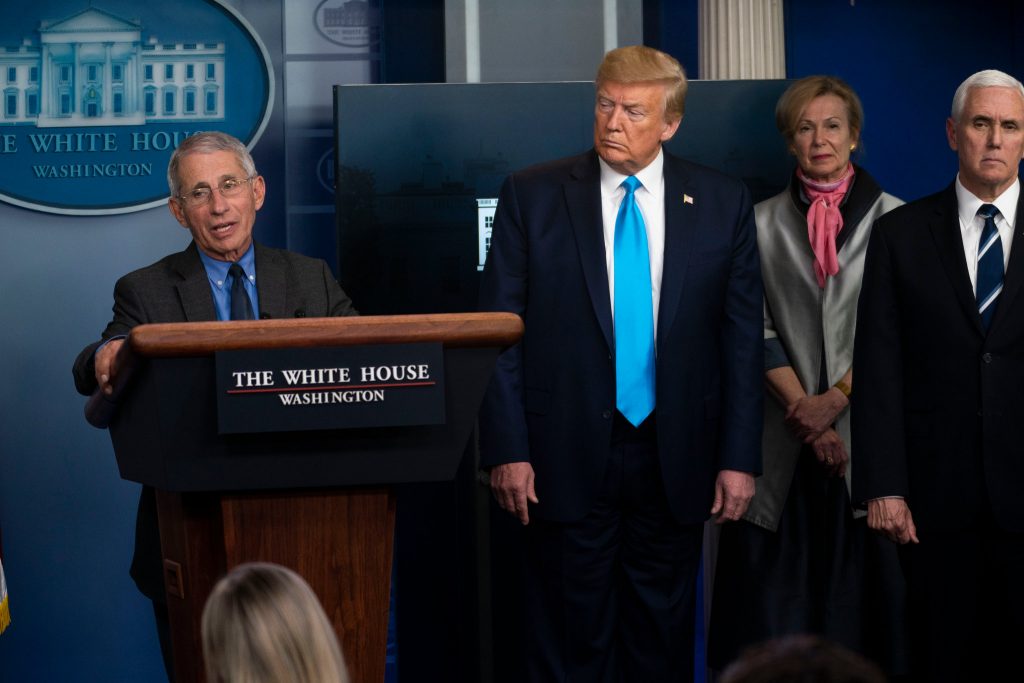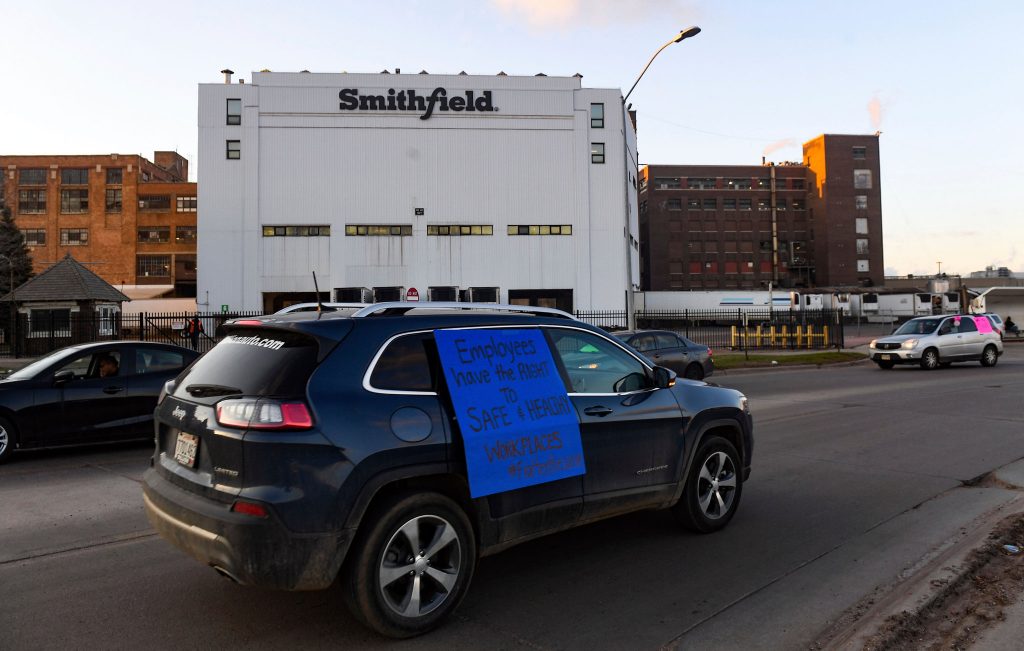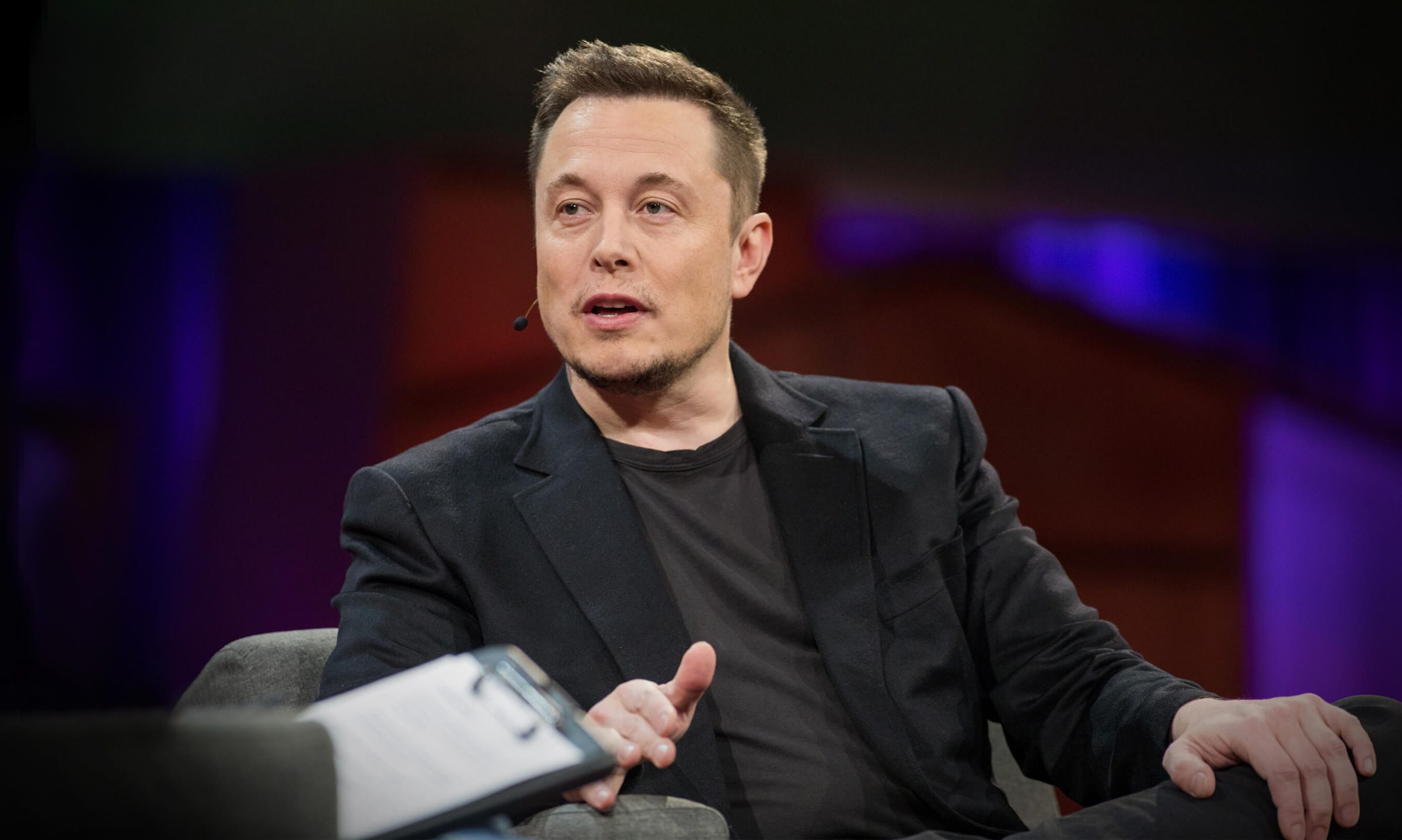
The Dow Jones falls to where it was when Trump took office
Oil-producing nations agreed to the largest production cut ever negotiated. Policymakers debated when and how to reopen businesses. And one of the largest pork processing plants in the U.S. closed after 238 employees came down with the virus.
Here’s what you need to know:
- Trump reposts a message on Twitter that is critical of Dr. Fauci.
- Oil-producing nations agree to cut production sharply.
- At one of the largest pork processing plants in the U.S., 238 employees got the virus. Now, it’s closing.
- Questions loom about reopening the economy: ‘You can’t just pick a date and flip a switch.’
- On Easter, many watched services online. Millions streamed Andrea Bocelli. And some pastors defied restrictions.
- Walt Disney World will furlough 43,000 workers.
- Employees of a Massachusetts drug company unwittingly spread the coronavirus.

Trump reposts a message on Twitter that is critical of Dr. Fauci.
President Trump publicly signaled his frustration on Sunday with Dr. Anthony S. Fauci, the federal government’s top infectious disease expert, after the doctor said more lives could have been saved from the coronavirus if the country had been shut down earlier.
Mr. Trump reposted a Twitter message that said “Time to #FireFauci” as he rejected criticism of his slow initial response to the pandemic that has now killed more than 22,000 people in the United States. The president privately has been irritated at times with Dr. Fauci, but the Twitter message was the most explicit he has been in letting that show publicly.
Mr. Trump retweeted a message from a former Republican congressional candidate. “Fauci is now saying that had Trump listened to the medical experts earlier he could’ve saved more lives,” said the tweet by DeAnna Lorraine, who got less than 2 percent of the vote in an open primary against Speaker Nancy Pelosi last month. “Fauci was telling people on February 29th that there was nothing to worry about and it posed no threat to the US at large. Time to #Fire Fauci.”
In reposting the message, Mr. Trump added: “Sorry Fake News, it’s all on tape. I banned China long before people spoke up.”
The tweet came amid a flurry of messages blasted out by the president on Sunday defending his handling of the coronavirus, which has come under sharp criticism, and pointing the finger instead at China, the World Health Organization, President Barack Obama, the nation’s governors, Congress, Democrats generally and the news media.
Mr. Trump did not “ban China,” but he did block non-American citizens or permanent residents who had been in China in the past 14 days from coming into the United States starting on Feb. 2. Despite the policy, 40,000 Americans and other authorized travelers have still come into the country from China since that order.
Dr. Fauci and other public health experts were initially skeptical that the China travel restrictions would be useful when the president was first considering them, but then changed their minds and told Alex M. Azar II, the secretary of health and human services, on the morning of Jan. 30 that they supported them.
Mr. Trump has repeatedly pointed back to those travel limits to defend his handling of the pandemic, but experts have said the limits were useful mainly to buy time that the administration did not then use to ramp up widespread testing and impose social distancing policies before infections could begin growing exponentially.
By mid-February, advisers had drafted a list of measures like school closures, sports and concert cancellations and stay-at-home orders, but the president did not embrace them until mid-March.
Dr. Fauci, the director of the National Institute of Allergy and Infectious Diseases since 1984, said on Sunday that earlier imposition of such policies would have made a difference.
“I mean, obviously, you could logically say that if you had a process that was ongoing and you started mitigation earlier, you could have saved lives,” he said on “State of the Union” on CNN. “Obviously, no one is going to deny that. But what goes into those kinds of decisions is complicated. But you’re right. Obviously, if we had, right from the very beginning, shut everything down, it may have been a little bit different. But there was a lot of pushback about shutting things down.”
Dr. Fauci’s comments, and the president’s pushback, come at a critical time as Mr. Trump wrestles with how fast to begin reopening the country. Public health experts like Dr. Fauci have urged caution about resuming normal life too soon for fear of instigating another wave of illness and death, while the president’s economic advisers and others are anxious to restart businesses at a time when more than 16 million Americans have been put out of work.

Oil-producing nations on Sunday completed the largest output cut ever negotiated, an unprecedented coordinated effort by Russia, Saudi Arabia and the United States to stabilize oil prices and, indirectly, global financial markets.
The agreement, cutting production by nearly 10 million barrels a day, appeared to put a floor on oil prices, which have been sinking in recent weeks as the coronavirus pandemic caused major economies to seize up, halting car commuting, air travel and much more.
Before the crisis, 100 million barrels of oil each day fueled global commerce, but demand is now up to 35 percent lower than that daily pace, a plunge that has crushed oil prices. While significant, the cuts agreed to on Sunday are still far short of what is needed to bring oil production in line with demand.
The agreement by the Organization of the Petroleum Exporting Countries, Russia and other producers will slash 9.7 million barrels a day in May and June, or close to 10 percent of the world’s output.
It was not immediately clear if the Trump administration made a formal commitment to cut production in the United States. There is no international mechanism to strictly enforce such production agreements and cheating is common. With prices plummeting, many companies have already reduced output, perhaps to levels approaching those under discussion.
While slightly smaller than a tentative pact reached last Thursday, the deal should bring some relief to struggling economies in the Middle East and Africa and global oil companies, including American firms that directly and indirectly employ 10 million workers. Analysts expect oil prices, which soared above $100 a barrel only six years ago, to remain below $40 for the foreseeable future. The American oil benchmark price was just under $23 a barrel on Thursday.
“This is at least a temporary relief for the energy industry and for the global economy,” said Per Magnus Nysveen, head of analysis for Rystad Energy, a Norwegian consultancy. “The industry is too big to be let to fail.”
The agreement is the result of President Trump’s mediation of a price war that had enmeshed Russia, Saudi Arabia and even Mexico for a couple of days. The deal was struck after more than a week of telephone conversations involving Mr. Trump, who desperately wanted to help the ailing American oil industry, the Saudi crown prince, Mohammed bin Salman, and President Vladimir V. Putin of Russia.

The operator of one of the country’s largest pork processing plants said on Sunday that it would shut down its facility in Sioux Falls, S.D., after 238 workers tested positive for the coronavirus. South Dakota’s governor said the outbreak represented more than half of the active cases in her state.
The plant, which is run by Smithfield Foods Inc., has 3,700 employees and produces 130 million servings of food per week, accounting for 4 to 5 percent of pork production in the United States, the company said.
Kenneth M. Sullivan, president and chief executive of Smithfield Foods, said in a statement on Sunday that the plant’s closure would put a significant strain on the food supply.
“The closure of this facility, combined with a growing list of other protein plants that have shuttered across our industry, is pushing our country perilously close to the edge in terms of our meat supply,” Mr. Sullivan said. “It is impossible to keep our grocery stores stocked if our plants are not running. These facility closures will also have severe, perhaps disastrous, repercussions for many in the supply chain, first and foremost our nation’s livestock farmers.”
-
Latest News
-
Top Posts in April



















Comments